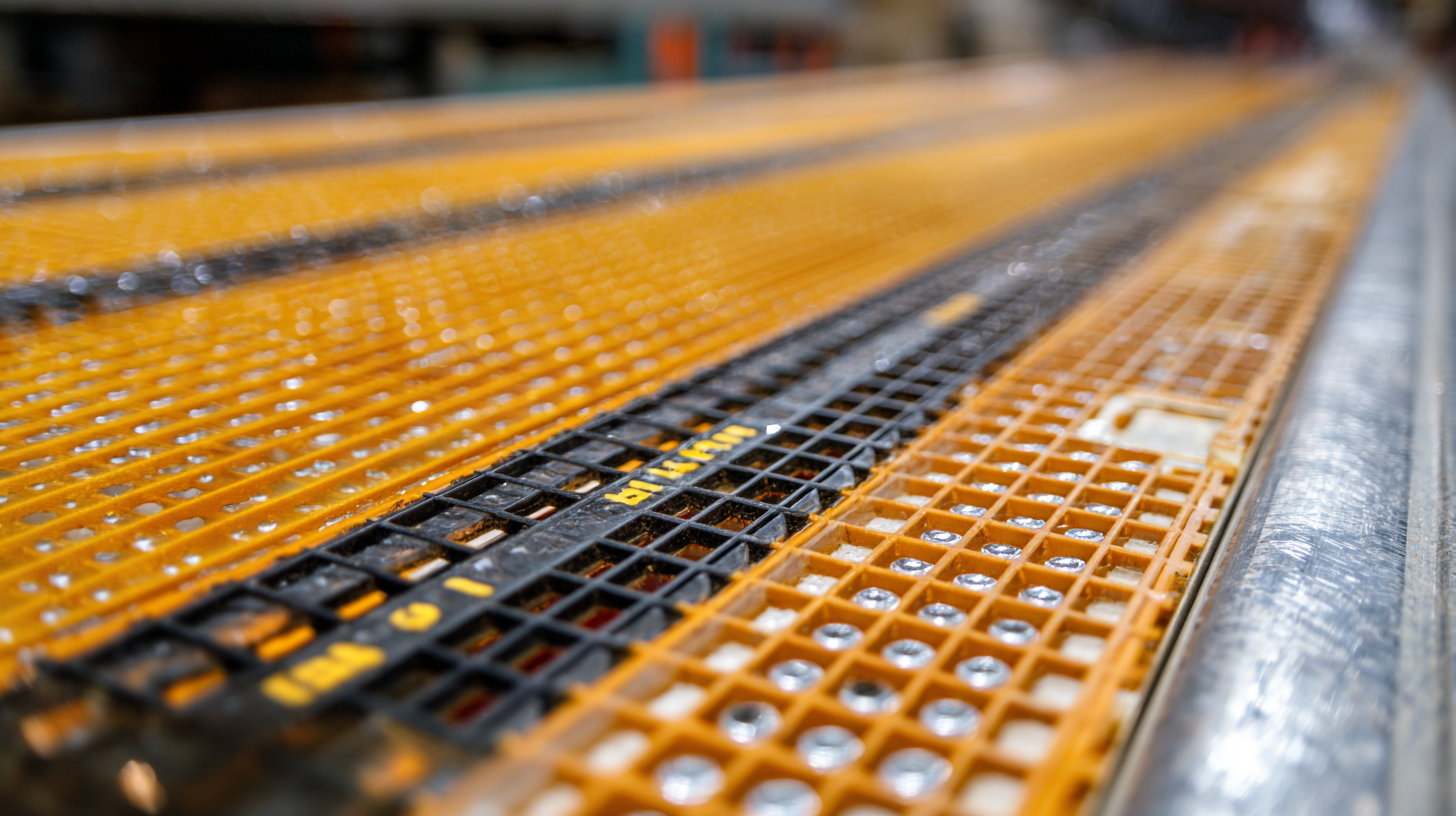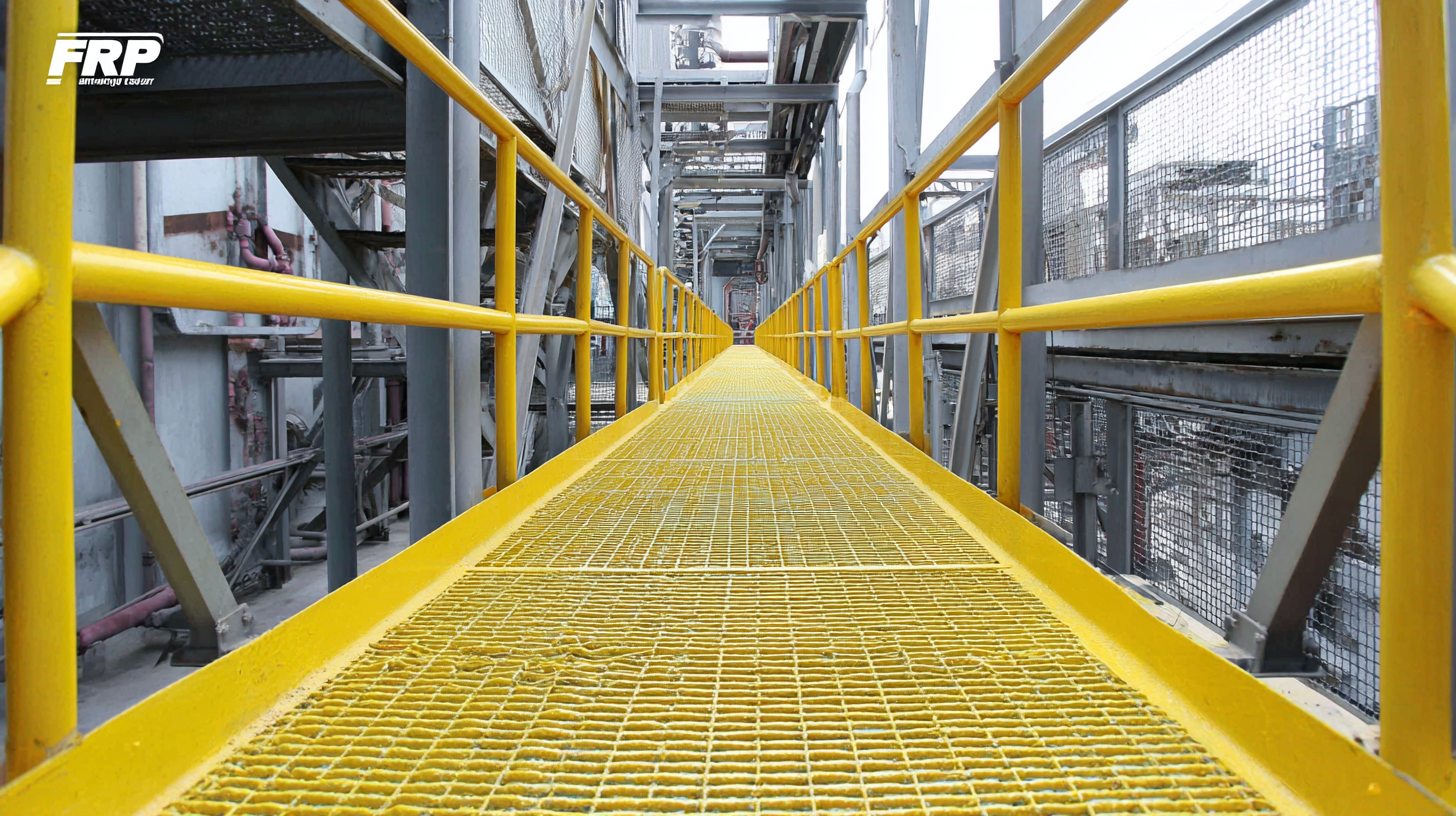In today's rapidly evolving industrial landscape, ensuring safety while maintaining operational efficiency is paramount. The adoption of innovative materials like FRP grating has emerged as a key solution for enhancing safety in various environments. As an embodiment of "中国制造,全球共享,品质值得信赖", these Fiber Reinforced Polymer grating systems are not only engineered for durability and strength but also designed to meet the diverse needs of global markets. Their lightweight nature, combined with exceptional corrosion resistance, makes FRP grating an ideal choice for industries ranging from construction to chemical processing.

This blog will delve into the effective solutions offered by FRP grating systems, highlighting their unique benefits and the role they play in fostering safer work environments across the globe.
FRP (Fiber Reinforced Plastic) grating systems have emerged as a crucial solution for enhancing safety across various industrial applications. These innovative structures offer numerous benefits that significantly contribute to workplace safety. According to industry reports, FRP grating is approximately five times lighter than traditional metal grating while providing equal or greater strength. This not only reduces installation costs but also minimizes the load on supporting structures, further enhancing overall safety.
An important aspect of FRP grating systems is their anti-slip properties, which are vital in environments prone to spills or wet conditions. Studies show that workplaces utilizing FRP grating experience up to a 50% reduction in slip-and-fall incidents. Additionally, FRP materials are corrosion-resistant, ensuring longevity and reducing maintenance costs. This durability contributes to a safer working environment by eliminating the risks associated with degraded flooring.
**Tips for Implementing FRP Grating:**
- Consider the specific environmental conditions when selecting the type of FRP grating to ensure optimal performance.
- Regularly inspect grating systems for any signs of wear or damage to maintain safety standards.
- Involve employees in the selection process to address safety concerns and enhance user acceptance of new systems.

Fiber Reinforced Polymer (FRP) grating systems have become a global favorite due to their remarkable features that enhance safety in various applications. One of the most significant advantages of FRP grating is its lightweight nature combined with exceptional strength. This makes it ideal for environments where heavy materials pose safety risks or logistical challenges. Additionally, FRP grating exhibits excellent corrosion resistance, making it suitable for use in harsh environments, such as chemical plants and wastewater treatment facilities. The ability to withstand extreme weather conditions further solidifies its position as a preferred choice for outdoor applications, ensuring longevity and reduced maintenance costs.
Another key feature of FRP grating is its design versatility. Available in various colors, sizes, and configurations, it can easily be tailored to meet specific project requirements. This adaptability not only enhances aesthetic appeal but also allows for better integration into existing structures. Furthermore, the non-slip surface of FRP grating improves safety by minimizing the risk of slips and falls, which is crucial in industrial settings. As the demand for cost-effective, durable, and safe solutions continues to grow, FRP grating systems are set to play an increasingly vital role in infrastructure development worldwide.
| Feature | Benefits | Applications |
|---|---|---|
| Corrosion Resistance | Long-lasting, ideal for chemical environments | Chemical plants, water treatment facilities |
| Lightweight | Ease of installation and transportation | Construction sites, maintenance platforms |
| Slip Resistance | Increases safety in wet and slippery conditions | Walkways, industrial floors |
| Customizable | Various colors and sizes to meet specific needs | Architectural applications, recreational areas |
| Electrical Insulation | Safe for use in electrical environments | Electrical sub-stations, power plants |
| UV Resistance | Durable in outdoor environments with sunlight | Outdoor walkways, external platforms |
 When evaluating safety and durability in industrial environments, the choice between
FRP (Fiberglass Reinforced Plastic) grating and traditional materials like steel and wood can
dramatically influence operational efficiency. According to a report by the American Composites Manufacturers Association (ACMA),
FRP grating is approximately 30% lighter than steel grating, which not only improves ease of installation but also
reduces the risk of workplace injuries associated with heavy lifting. Furthermore, FRP is resistant to corrosion, boasting a
service life that can exceed 25 years in harsh environments, significantly outperforming traditional materials,
which may deteriorate rapidly when exposed to chemicals and moisture.
When evaluating safety and durability in industrial environments, the choice between
FRP (Fiberglass Reinforced Plastic) grating and traditional materials like steel and wood can
dramatically influence operational efficiency. According to a report by the American Composites Manufacturers Association (ACMA),
FRP grating is approximately 30% lighter than steel grating, which not only improves ease of installation but also
reduces the risk of workplace injuries associated with heavy lifting. Furthermore, FRP is resistant to corrosion, boasting a
service life that can exceed 25 years in harsh environments, significantly outperforming traditional materials,
which may deteriorate rapidly when exposed to chemicals and moisture.
Moreover, FRP grating systems demonstrate superior slip-resistance, which is essential for ensuring safety in wet or oily conditions.
Research published in the Journal of Occupational Safety and Health indicated that FRP can reduce
slip and fall accidents by up to 50%, making it a favorable choice for facilities that prioritize worker protection.
The non-conductive properties of FRP also enhance safety in electrical environments, providing an added layer of protection
that traditional metal gratings cannot offer. As industries continue to prioritize safety and longevity,
the shift towards innovative FRP solutions is becoming increasingly evident.
When it comes to enhancing safety in industrial environments, the quality of FRP (Fiberglass Reinforced Plastic) grating systems plays a crucial role. The importance of these products is underscored by their ability to meet stringent safety standards, such as ASTM F3059, which provides guidelines specifically for grating products in chemical exposure environments. Recent advancements in manufacturing processes, particularly from Chinese manufacturers, have enabled the production of high-quality FRP grating that meets or exceeds these standards. The increasing demand for customized solutions in various industries highlights the need for innovative and robust safety products.
Chinese manufacturing has significantly advanced the quality and availability of FRP grating products. According to industry reports, the global FRP grating market is expected to reach USD 1.4 billion by 2025, driven by diverse applications across sectors like wastewater treatment, oil and gas, and transportation. This growth is propelled by a commitment to quality control and compliance with international safety standards. Furthermore, the use of high-performance materials, such as phenolic resins, enhances the durability and non-corrosive properties of these grating systems, ensuring they provide long-lasting solutions in challenging environments. With manufacturers continuously improving their processes and products, the safety and reliability of FRP grating systems are set to be further elevated.
In various industries, the application of Fiber Reinforced Polymer (FRP) grating systems has emerged as a game-changer in improving safety standards. According to a report from the Global Composites Market, the demand for FRP materials in construction and infrastructure is projected to grow by over 7% annually through 2026. This growth is largely driven by the material's corrosion resistance, lightweight nature, and structural integrity, making it ideal for environments that require enhanced safety measures.
One compelling application of FRP grating is seen in the oil and gas sector, where traditional materials often succumb to corrosion due to harsh chemicals and extreme weather conditions. A study by the American Composites Manufacturers Association highlighted that FRP grating systems can reduce maintenance costs by about 30% over traditional alternatives. Moreover, in wastewater treatment facilities, their non-slip properties contribute significantly to workplace safety by minimizing the risk of slips and falls, a common hazard in such settings. The versatility of FRP grating across diverse applications underscores its critical role in advancing safety protocols and operational efficiency in today’s demanding industrial landscape.
TradeManager
Skype
VKontakte

